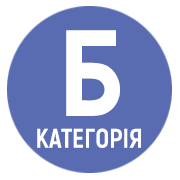ARMED VIOLENCE AND ENEMY IMAGE FORMATION IN THE CONTEXT OF RUSSIAN AGGRESSION
DOI:
https://doi.org/10.32689/2523-4625-2023-2(68)-6Keywords:
armed violence, image of the enemy, mechanism of formation of the image of the enemy, Russian- Ukrainian warAbstract
The article examines the interrelation between armed violence and the formation of the enemy image, analyzing the mechanism of the latter in the context of Russian aggression. With the onset of the Russian-Ukrainian war in 2014, Russian propaganda has made efforts to justify aggressive actions and cultivate a negative perception of Ukraine, its people, government, armed forces, and more. In official propaganda, Russia employs linguistic units with predominantly negative connotations to designate the enemy. This includes terms that contribute to the formation of a «language of enmity» or a «discourse of hatred». These verbal means aim to discredit the Ukrainian side and create an impression within its own society that Ukraine poses a threat to Russia's security and national interests. During the process of forming the enemy image from Ukraine, Russian propaganda actively reinforces existing stereotypes, which can stem from historical, cultural, or ethnic differences between Russia and Ukraine. This tactic, combined with mythologization, becomes an effective instrument to embed propaganda ideas into mass consciousness, as it amplifies already established notions. To date, Russia has developed a series of stereotypes and myths regarding Ukraine, which are used to shape the image of the enemy: conflating Rus and Russia, historical unity of Russians and Ukrainians, the existence of «true, righteous» Ukrainians seeking alliance with Russia, while others are labeled as «neo-Nazis»; «Russian-speaking» individuals needing protection from Russia and Putin. The production of myths by Russian propaganda is closely tied to the process of historical falsification. Russia constructs the image of an enemy from the Ukrainian state and its people through manipulative techniques such as complete dehumanization of the opponent, erasing their «human face». Consequently, this image is built upon inhumane foundations where the person is reduced to the level of a biological entity or even an animal. This leads to insufficient respect and hostility towards the opposing group, achieved through stereotype creation and distortion of characteristics. Violence and cruelty then become justifications for the struggle for existence. The mechanism of Russia's formation of the enemy image from Ukraine involves constructing a universal matrix of beliefs that institutionalizes the process of reproducing enmity, with the aim of justifying interference in the internal affairs of the Ukrainian state and applying coercive measures against demonized groups. The image of the enemy from Ukraine that has been instilled in the consciousness of the Russian population deeply impacts their perception of events in the Russian-Ukrainian war and provides a foundation for supporting aggressive actions and brutality by the Russian army within its own society
References
Гауфман Є. Політичні і правові аспекти образу ворога. Філософія права і загальна теорія права. № 1–2/2016. С. 76–90. URL: http://phtl.nlu.edu.ua/issue/view/11000.
Левченко Л., Ракчеєва С. Технології формування образу зовнішнього ворога у демократичних та недемократичних режимах. Наукові праці Чорноморського державного університету імені Петра Могили комплексу «Києво-Могилянська академія». Сер: Політологія. 2016. Т. 273, Вип. 261. С. 74–78. URL: http://nbuv.gov.ua/UJRN/Npchdupol_2016_273_261_16.
Bader, A., Zhurba, I., Kladko, A., Demchenko, V., & Rusanova, M. (2023). War in the practice of functioning of different types of political systems. Amazonia Investiga. 12(64), 331–339.
Науково-дослідний центр гуманітарних проблем Збройних Сил України. Формування російськими засобами масової інформації образу ворога з України. URL: https://www.facebook.com/NDCGPZSU/posts/691099101006356/.
Олексієнко С., Андрощук О. Психологічні особливості формування образу ворога як складової гібридної війни Російської Федерації проти України. Зб-к наукових праць Національної академії Державної прикордонної служби України. Сер: Психологічні науки. 2019. № 2. С. 182–198. URL: http://nbuv.gov.ua/UJRN/znpnapv_pn_2019_2_15.
Савва М. Система офіційної російської пропаганди: настільки та чому вона ефективна. URL: https://savvamike.com/uk/systema-oficzijnoyi-rosijskoyi-propagandy-naskilky-ta-chomu-vonaefektyvna-25-07-2023/.
Хорунжій Г. Війна Росії проти України. Російська пропаганда як складова «гібридної війни». Освіта регіону. Політологія. Психологія. Комунікації. URL: https://social-science.uu.edu.ua/article/1392.
Кирилюк О. Мовні засоби творення образу ворога в умовах інформаційної війни. URL: https://journals.indexcopernicus.com/api/file/viewByFileId/1248788.pdf
Мова ворожнечі і російська дезінформація. URL: https://zaxid.net/mova_vorozhnechi_i_rosiyska_dezinformatsiya_n1565469.
Haslam N., Loughnan S. Dehumanization and Infrahumanization. URL: https://www.annualreviews.org/doi/abs/10.1146/annurev-psych-010213-115045
Шутов Р. Дегуманізація як інструмент інформаційної війни.URL: https://ms.detector.media/profstandarti/post/574/2014-06-06-degumanizatsiya-yak-instrument-informatsiynoi-viyny/.





